
9464
.pdf
Grammar
Gerunds and infinitives
Look at the following uses of the gerund after prepositions
They do this by bringing and sharing knowledge and information. as a noun
Working with governments, employers and workers themselves will be of great importance.
after certain verbs( begin, consider, enjoy, finish, risk, start, suggest, involve, keep, avoid )
They’ve just finished checking these hose reels.
Look at the following uses of the infinitive (to+verb)
as subjective complement (predicate noun) Our mission is to make Europe’s workplaces safer.
after adjectives
It is equally important to pay attention to cumulative health risks.
after certain verbs (aim, decide, intend, prepare, manage, need, plan, want, afford, demand, fail, hope)
Safety engineering and hygiene aim to reduce the number of work-related injuries.
to show purpose
The men shouted to warn everyone of the danger.
Some verbs can be followed by either a gerund or an infinitive with no difference in meaning.
They prefer wearing proper protective clothing. They prefer to wear proper protective clothing.
Some can be followed by either a gerund or an infinitive but with a difference in meaning.
We stopped using out-of-date equipment at this mine. We stopped to get some extinguishers.
A. Complete the following text about Australian National OHS strategy with appropriate gerund or infinitive forms.
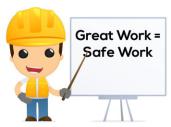
The National OHS Strategy 2012-2022 provides a basis for (develop) sustainable, safe and healthy work environments and for (reduce) the number of people hurt or killed at work.
The National Strategy focuses on particular OHS risks and industry sectors (minimize) the impact of its initiatives. The risks targeted are musculoskeletal disorders, falls from heights, and hitting or being hit. These three risks account for more than half of the workers’ compensation claims across Australia.
The priorities identified by the National Strategy to achieve short-term and longterm OHS improvements are (reduce) the impact of risks at work, (prevent) occupational disease more effectively and (eliminate) hazards at the design stage.
The six priority industry sectors targeted are building and construction, transport and storage, manufacturing, health and community services, agriculture and forestry and fisheries.
Follow-up
Read the questions and find the right answers using all the information you have learnt from the texts and your common knowledge.
Workplace Safety Is No Accident Quiz
1.Workplace safety is only the responsibility of the person(s) wearing the risk management hat.
 True
True
 False
False
2.Safety is just common sense. The entity doesn’t
need to waste time training people not to put their hands in a shredder.
 True
True
 False
False
3.OSHA is just a regulatory agency; safety training and information must be gotten elsewhere.

 True
True
 False
False
4.Dress codes can decrease accidents and injuries.
 True
True
 False
False
5.Safety glasses, gloves, helmets, and safety shoes, although not a fashion statement, must be worn on the job if policy requires them.
 True
True
 False
False
6.Any injury at work—no matter how small—must be reported immediately to the person’s supervisor and receive first-aid attention.
 True
True
 False
False
See Appendix I to find out if you’re right or not.
Case study
A serious safety problem is threatening the future of Transal, a pipeline company. Hundreds of yearly accidents have led to high absenteeism, causing lost time, low morale, unsatisfactory efficiency levels and falling profits. If the company is to survive it must develop a
“safety conscious culture”. The question is how?
Task I
Look at the three options open to Transal and discuss the potential benefits and disadvantages of each one.
1. THE INTERNATIONAL SCHOOL OF INDUSTRIAL ENGINEERING.
Send all the technical staff members on an intensive “safety awareness” course run by a high-profile school of engineering. The course is very expensive but
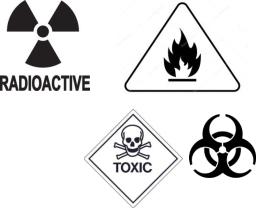
has an excellent reputation. On their return, the managers will train their teams. The forecast is to have improved safety conditions by this time next year.
2. STANFORD, TRAYNOR α WELDOM ASSOCIATES.
Bring outside consultants into every subsidiary to organise training schemes for all employees over a period of six months. This would be more expensive but would give low-level workers an opportunity to speak to experts and to point out (обозначить, указать) problems. The results should be almost immediate and the experts would be on hand to talk to the press.
3. SAFETY CHARITY CHALLENGE.
Offer to give a sum of money community charity of the workers’ choice every time they eliminate a safety hazard. An untested idea suggested by the communications department. If successful, it could lead to a lot of positive publicity and be very cost-effective. However, it relies on the employees’ willingness to take part in such a scheme. There is no knowing how long it might take to improve conditions.
Task II
Choose the best option and present your arguments to the class.
Task III
Write a brief email to the Transal board recommending the best option and giving reasons for your decision. (see Appendix I)
DECISION
Turn to Appendix I and see what happened when a famous British company was faced with the same problem.
UNIT II
HAZARDS
Starting up
You deal with hazards in your life every day.
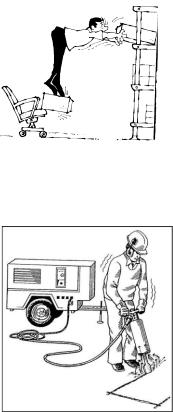
1.What are the most frequent situations that trouble you?
2.Do you know how to protect yourself from them?
3.Have you ever been informed how to deal with hazards in the workplace?
Hazard is a dangerous event or situation that may lead to an emergency or disaster or may cause injury or loss.
Vocabulary
A. Match the verbs and nouns below to make word partnerships about hazards.
1. high exposure to |
a. wiring |
2. skin |
b. conditions |
3. to work from |
c. cords |
4. improper |
d. irritation |
5. to expose smb |
e. rays |
6. unsafe |
f. sunlight |
7. insect |
g. serious long-term injures |
8. frayed |
h. bites |
9. ultraviolet |
i. to biological hazards |
10. to result in |
g. heights |
B. There are four main types of hazards: physical, biological, ergonomic and chemical. Read the text and match the headings to the paragraphs.
a. chemical hazards |
b. ergonomic hazards |
c. physical hazards |
d. biological hazards |
1.__________ They are the most common and will be present in workplaces at one time or another. They include unsafe conditions that can cause injury, illness and death. They are typically easiest to spot but too often overlooked because of familiarity, lack of knowledge, resistance to spending time or money to make necessary improvement.
2.__________ They come from working with animals,
people, or infectious plant materials. Work in day care, hospitals, hotel laundry and room cleaning, laboratories, veterinary
offices may expose you to biological hazards.
3.___________ They occur when the type of work, body position and working conditions put strain on your body. They are the hardest to spot since you don’t always immediately notice the strain on your body or the harm these hazards pose. Short-term exposure may

result in “sore muscles” the next day, but the long-term exposure can result in serious long-term injures.
4.__________ This type of hazards are present when a worker is exposed to any chemical preparation in the workplace in any form (solid, liquid or gas). Some are safer than others, but to some workers who are more sensitive to chemicals, even common solutions can cause illness, skin irritation or breathing problems.
C. Look at the list of different risks and define what type of hazard they belong to and complete the table.
improper wiring |
|
constant loud noise |
bacteria and virus |
poor lighting |
|||
solvents |
frequent lifting |
vapours and fumes |
carbon monoxide |
||||
high exposure to sunlight |
explosive chemicals |
fungi |
|
spills on floors |
|||
|
|
|
|
||||
Physical hazards |
Biological hazards |
Ergonomic haz- |
Chemical hazards |
||||
|
|
|
|
ards |
|
|
|
|
|
|
|
|
|
|
|
|
|
fungi |
|
|
|
solvents |
|
|
|
|
|
|
|
|
|
Pronunciation
A. Match the words in the left and right columns which contain the same sound.
1. physical |
a. virus |
2. lighting |
b. unsafe |
3. injury |
c. fungi |
4. ray |
d. cord |
5. trouble |
e. vapour |
6. cause |
f. solvent |
7. improper |
g. ergonomic |
8. increase |
h. liquid |
9. work |
i. frequent |
10. nuclear |
j. pneumoconiosis |
Grammar |
Comparatives and superlatives |
A.Look at the following sentences from the text and find comparatives and superlatives
1.Physical hazards are typically easiest to spot.
2.Some workers who are more sensitive to chemicals can have breathing problems.
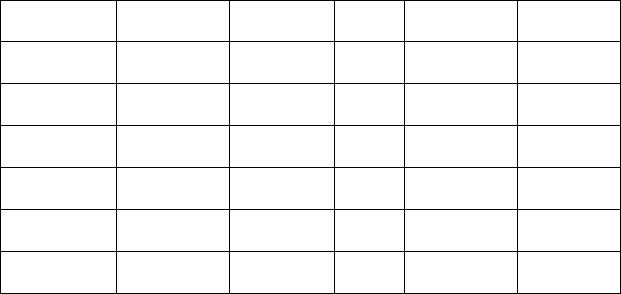
3.Some chemicals are safer than others.
4.These hazards happen less frequently on the construction sites.
B.How are the comparatives and superlatives of the following formed?
adjectives of one syllable
adjectives ending in –y
adjectives of more than one syllable
adverbs
C.Complete the table.
adjective |
comparative |
superlative |
adverb comparative |
superlative |
1improper
2busy
3frequent
4immediate
5hard
6bad
D. Fill in the gaps with the right form of the superlatives and comparatives.
1.Poor lighting causes serious risks (frequently) than improper wiring.
2.People working with hazardous substances should be much (careful).
3.Bhopal Disaster in India was one of (bad) industrial accidents on record.
4.The danger of nuclear power was never (clearly) proved than in April 1986 when one of the four reactors at Chernobyl exploded.
5.Over half (serious) industrial accidents in that century occurred since 1977.
6.We, at least, are a (healthy) organisation because of the changes we were forced to bring about in the workshop.
Reading
A.Dust is a common thing for you. Why do you think it is dangerous? Can dust be defined as a hazard? Why or why not? If yes, what type of hazards does it belong to?
B.Read the text and find out the possible causes of dust in the workplace.

Dangers of dust in the workplace
Millions of workers are at risk because of dust for two reasons; the danger of combustion (возгорание), and dustrelated illness. Dust can cause explosions (взрывы) if there is a concentration cloud of dust and a source of ignition (воспламенение), and it is only through careful manage-
ment and risk-minimisation that there are relatively few injuries caused in this way in the UK.
Dust-related illness is a much bigger problem for workers, and has been found to be one of the largest occupational killers in the UK. In 2003, there were around 4,000 deaths from industrial illnesses caused by dust such as mesothelioma, asbestosis, asbestos-related lung cancer, and silicosis.
Workplaces where dust may cause health problems
These are some of the places of work in which workers may be exposed to large amounts of dust:
Mines (coal dust) шахты
Quarries (silica dust and flint dust) каменоломни
Textiles (leather dust)
Mills and bakeries (flour dust)
Building sites (cement dust and asbestos dust)
Agriculture (grain dust)
Wood-related work (wood dust)
Dust-related illnesses
Most dust-related industrial illnesses take many years to develop, with people not realising they have them for up to 40 or 50 years in some cases. Pneumoconiosis is the name given to dust-related disease that affects the lungs, of which there are a number, including silicosis and asbestosis. Other illnesses that can be caused by dust include:
Skin conditions
Eye damage
Nose damage
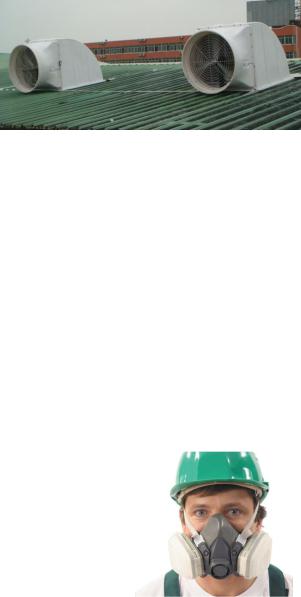
Cancer
Asthma
These are some ways in which employers can help make a cleaner, healthier en-
vironment for their employees:
Installing an exhaust ventilation (вытяжная вентиляция) system.
Installing a dilution ventilation (обще-обменная приточная вентиляция) system.
Ensuring employees wear proper protective clothing.
Ensuring employees undergo regular health checks to pick up any early signs of possible illness
C.Read the text more carefully and mark the sentences as true or false.
1.Danger of explosion is a much bigger problem than the problem of dustrelated illnesses.
2.It is possible to know about some dust-related illness only when you’re retired.
3.Dust causes mainly heart-related health problems.
4.Employers can’t reduce injures to workers.
5.There are just a few places of work where workers may be exposed to large amount of dust.
6.A ventilation system should be installed in a work-
place where dust is concentrated.
7. Proper clothing can protect a worker from the dust.
Speaking
Student A: You are a new employee at a coal mine.
Student B: You are a safety engineer at the same industry.
Discuss what hazards might happen in your industry and what measures should be taken to prevent them.
Case study on occupational noise
Standards set by OSHA (Occupational Safety and Health Administration) indi-
cate that continued exposure to noise over 85 dBa* will eventually harm hear-
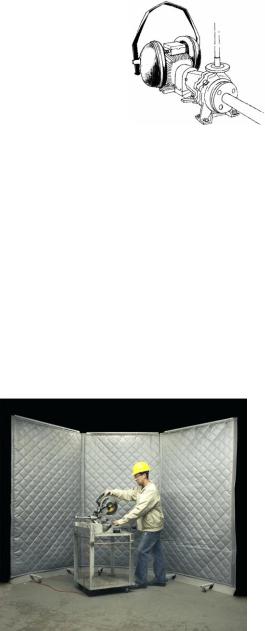
ing. According to OSHA, the exposure time allowed is cut in half for every 5 decibel increase. For example, if a sound is 95 dBa, then 4 hours of exposure, over time, will cause hearing loss, and exposure to sounds at 115 dBa for just 15 minutes a day, over time, will cause hearing loss.
Noise need not be excessively loud to cause problems in the workplace. Noise can interact with other workplace hazards to increase risks to workers.
Exposure to noise may pose a variety of health and safety risks to workers:
-hearing loss
-physiological effects (exposure to noise has an effect on an increase in blood pressure)
-work-related stress, noise in the work can be a stressor, even at a quite low levels
-increased risk of accidents, high noise levels make it difficult for staff to hear and communicate.
How can noise be controlled?
Workplace noise can be controlled: (1) at the source; (2) through the use of barriers; and (3) at the worker.
A. At the source
The best method of prevention is to eliminate the hazard.
Therefore controlling noise at its source is the best method of noise control. It
________________________________________________________________
* сокр. от decibels adjusted – децибелы, отсчитываемые относительно контрольного уровня шумов
can also often be cheaper than other methods of noise control. This method of control may require that some noisy machinery be replaced. Many machines are now required to conform to noise standards.
Regular maintenance, lubrication and replacement of worn or defective parts can also be effective ways to reduce noise levels.
B. Barriers
If it is not possible to control the noise at the source, then it may be necessary to enclose the machine, place sound-reducing barriers
